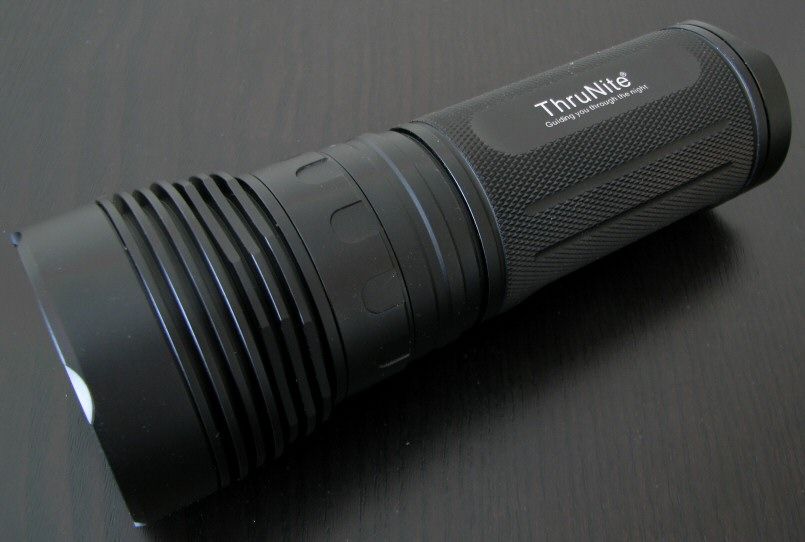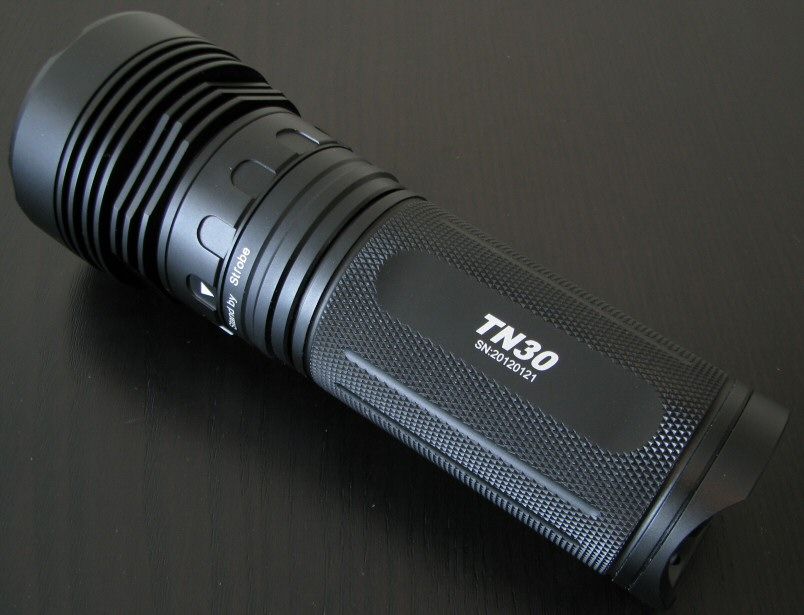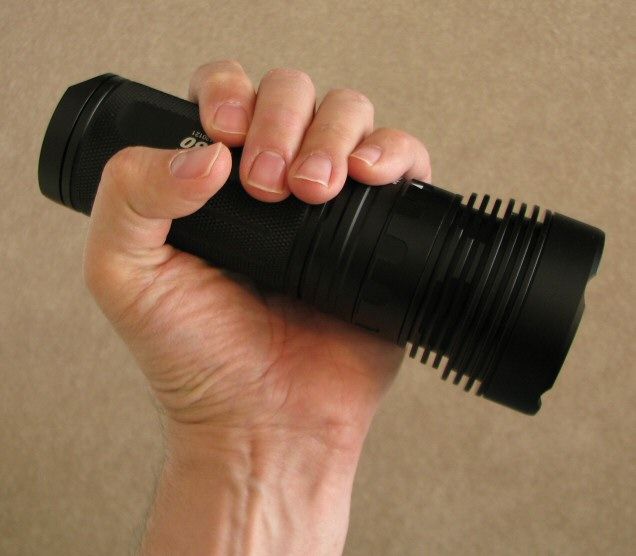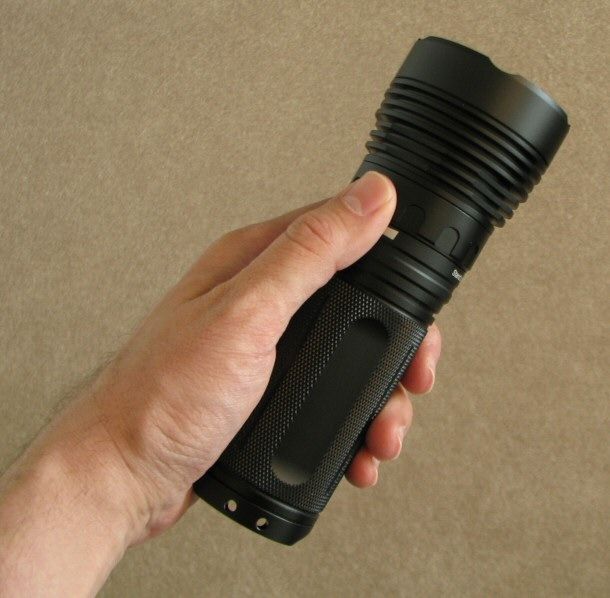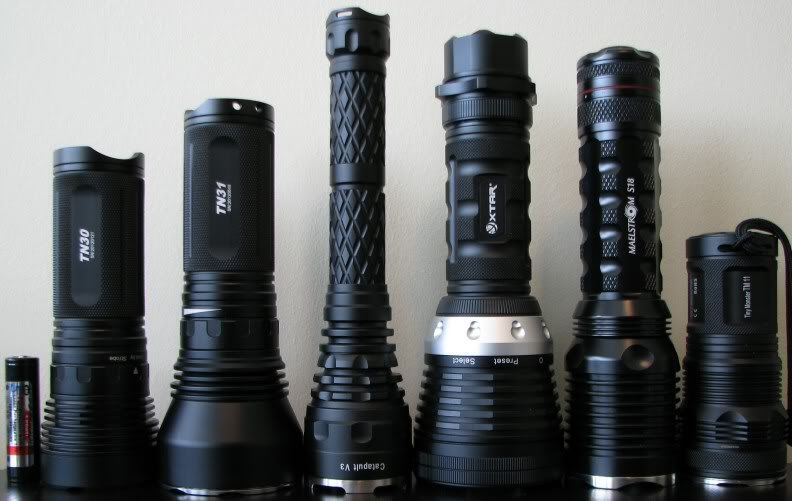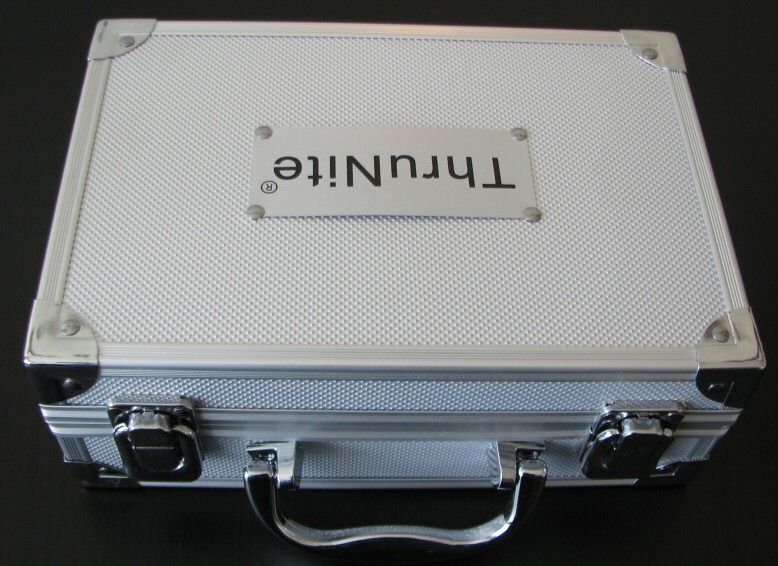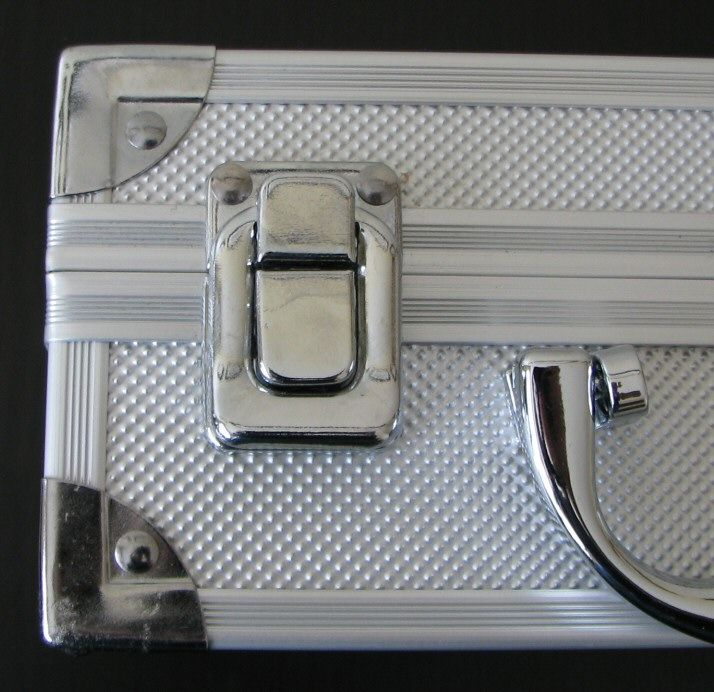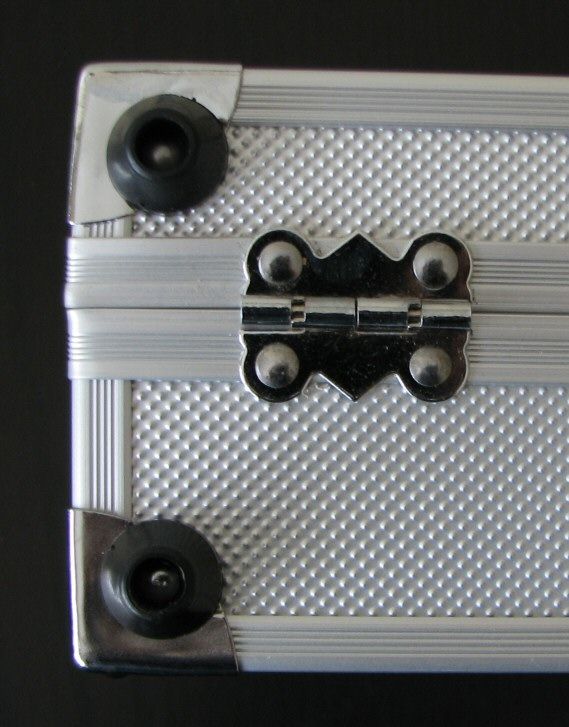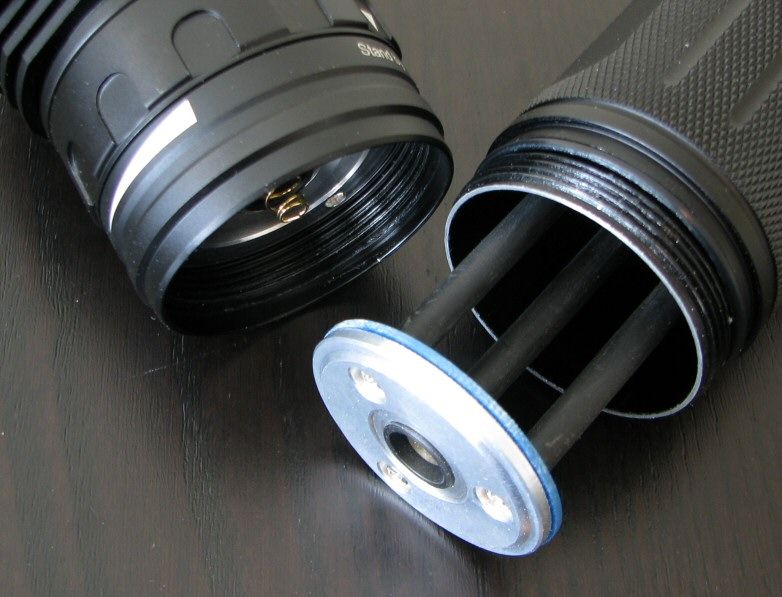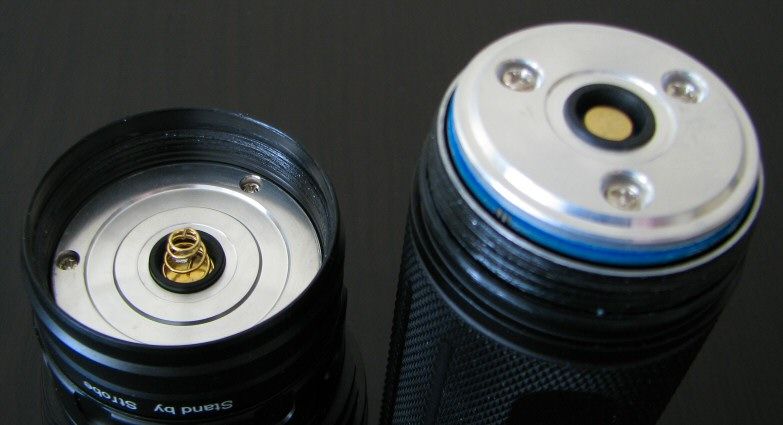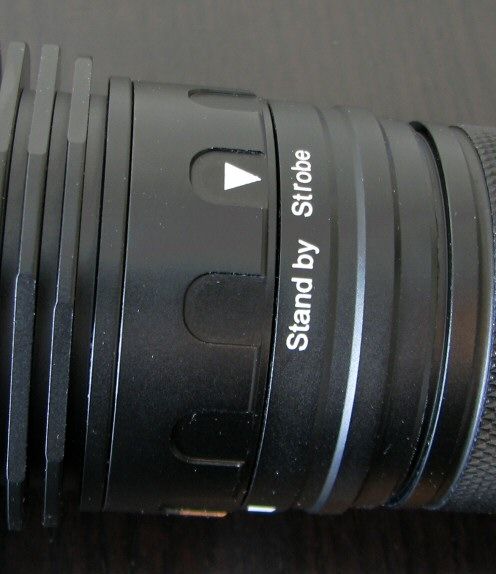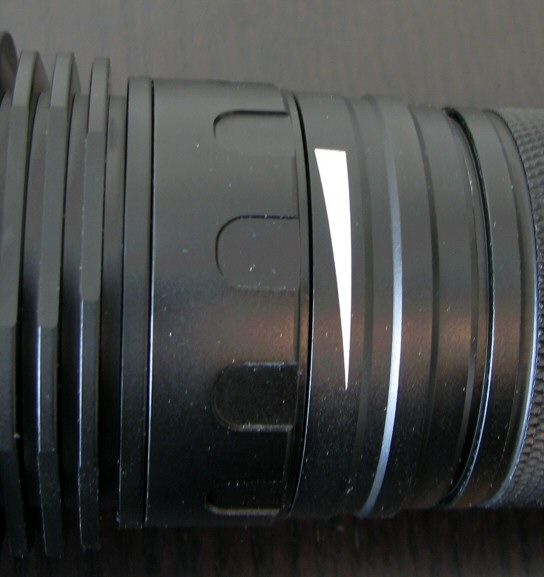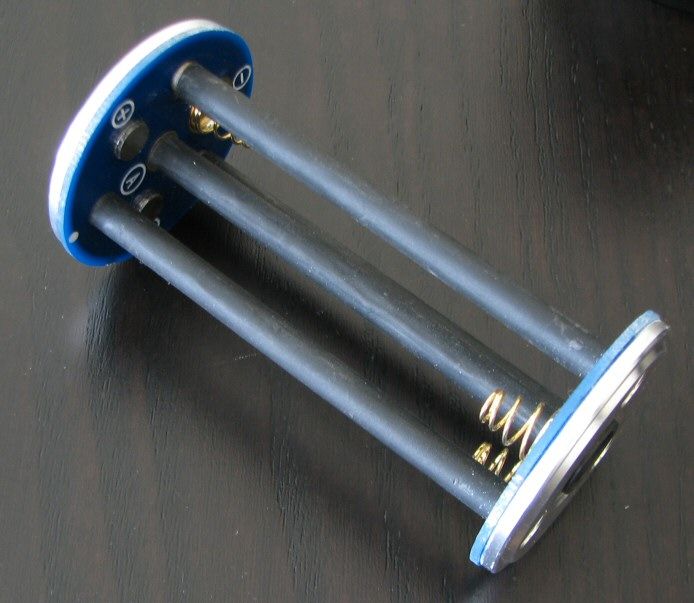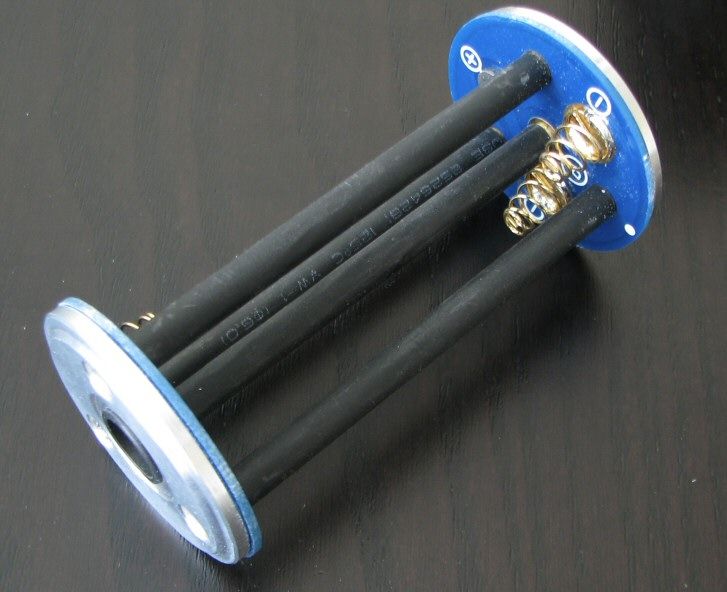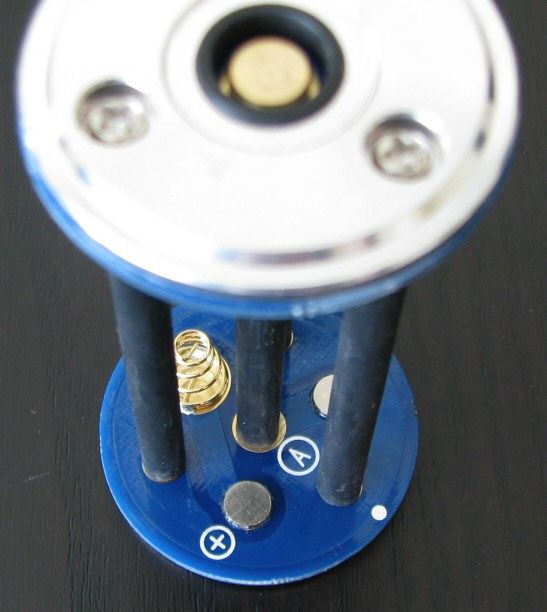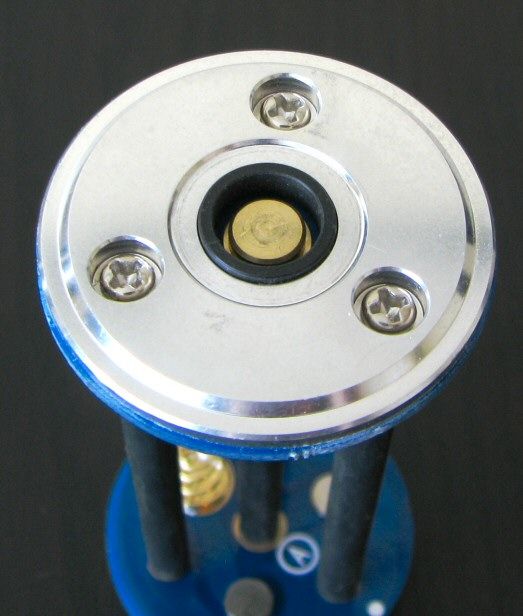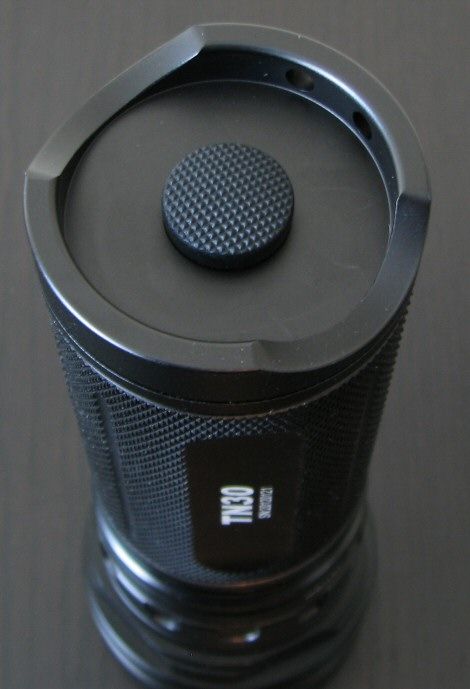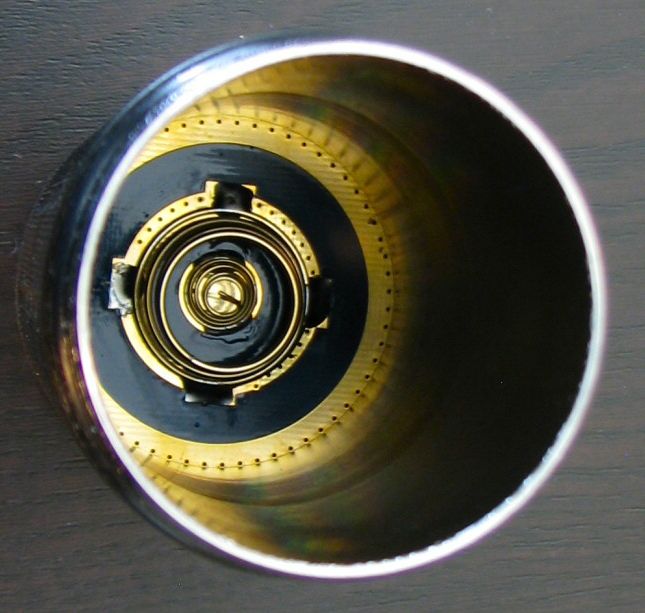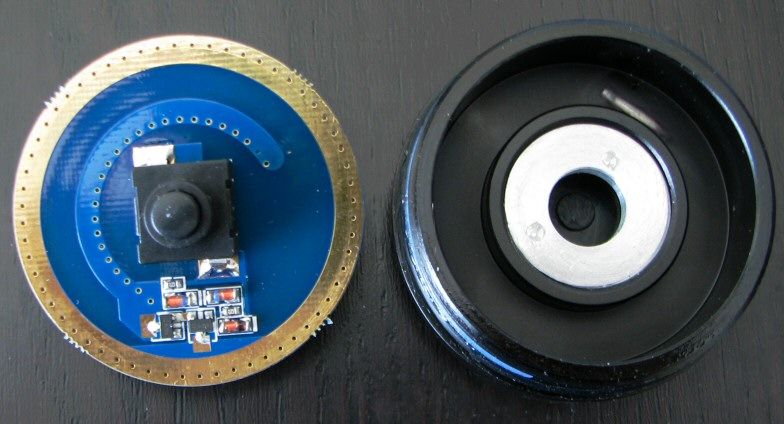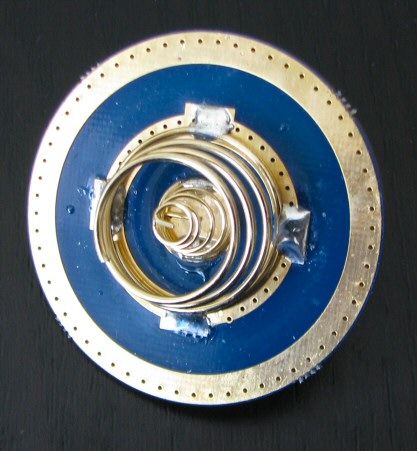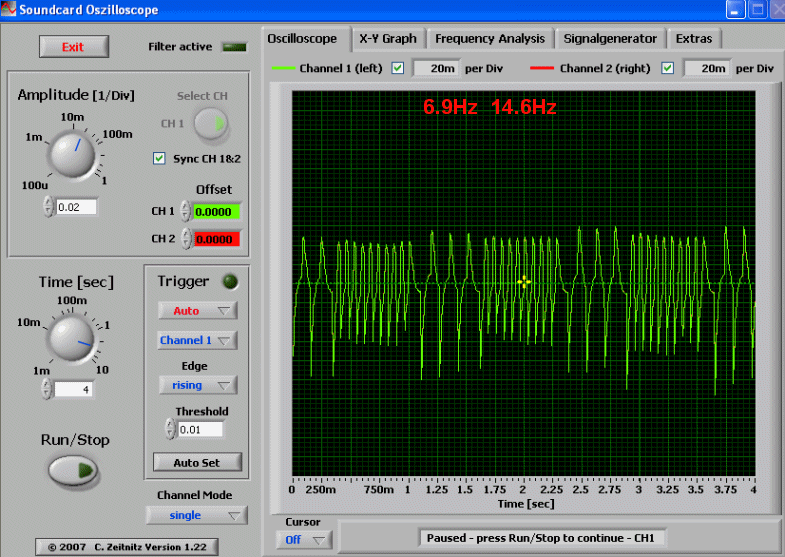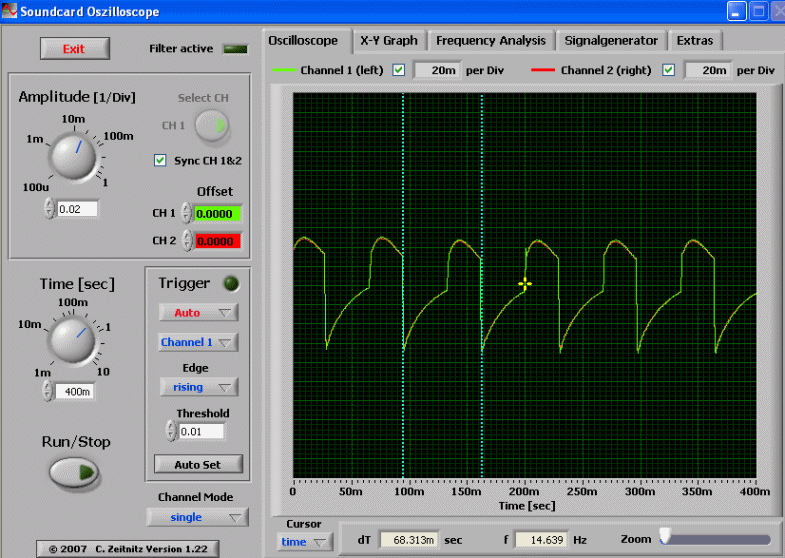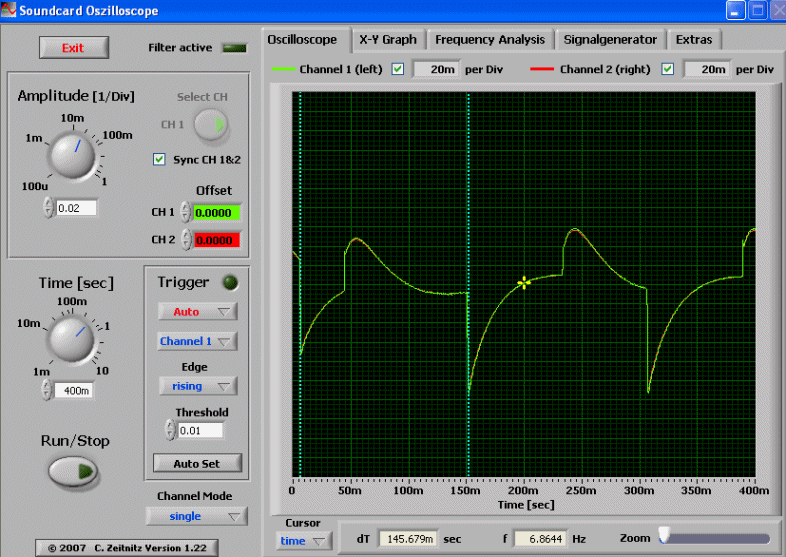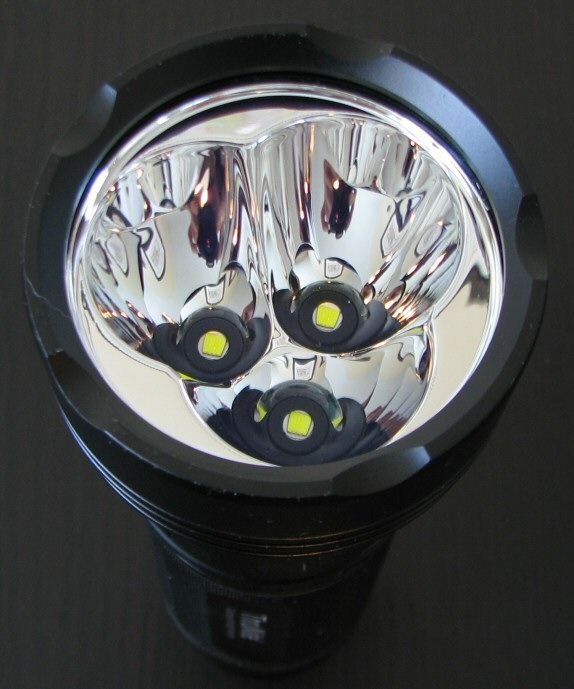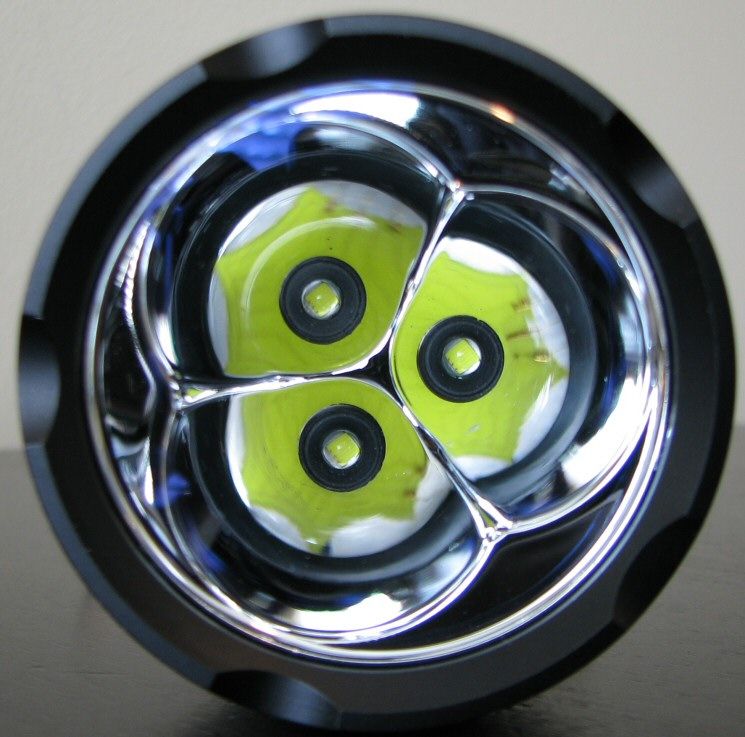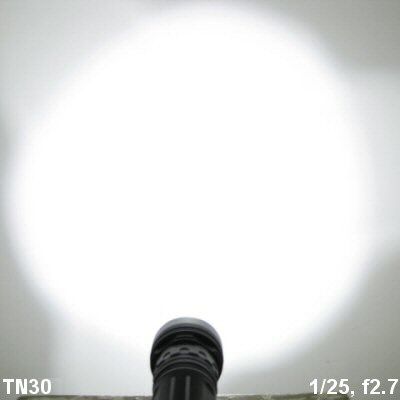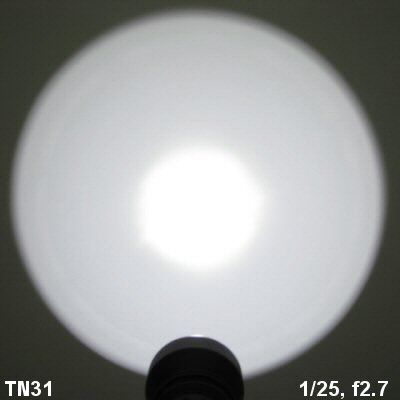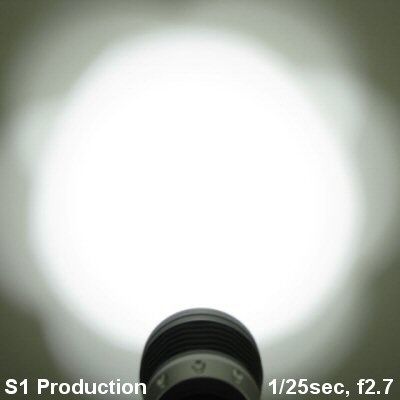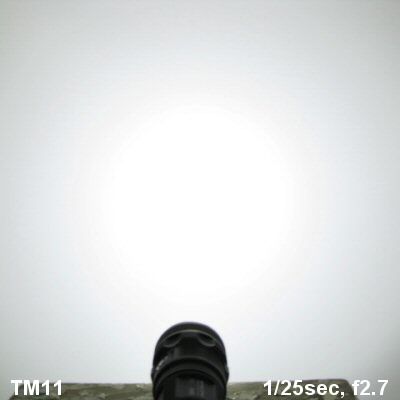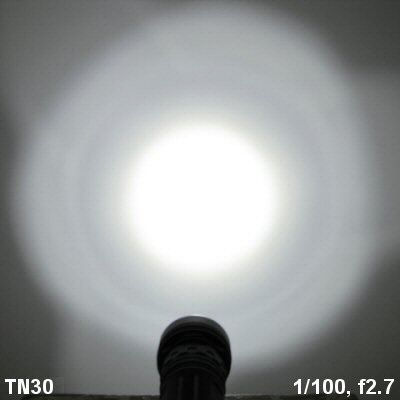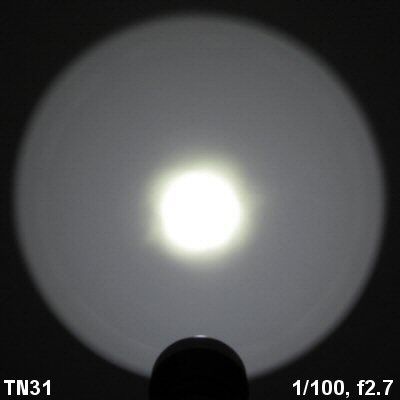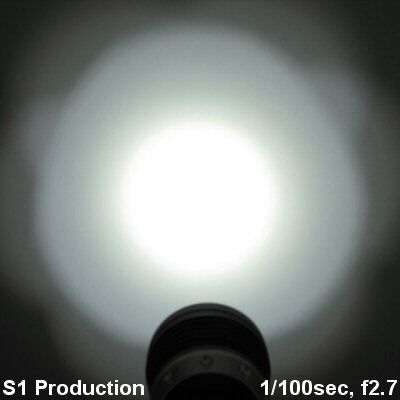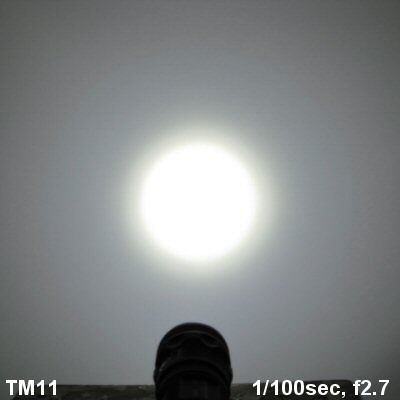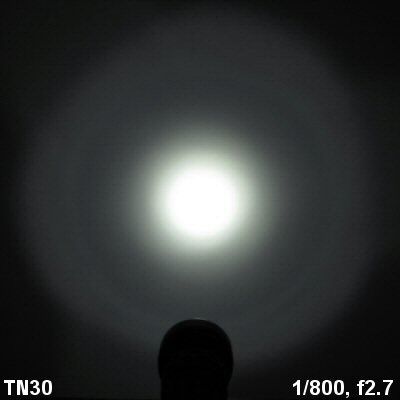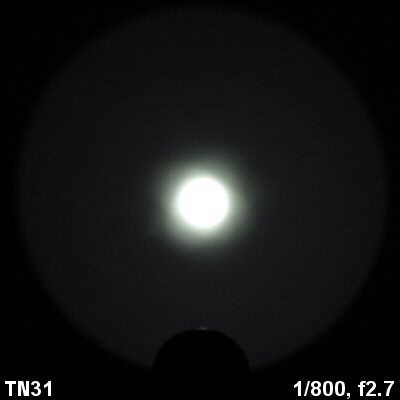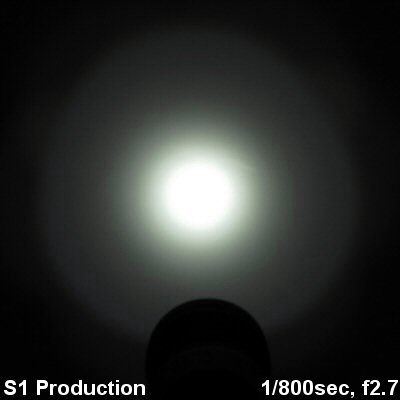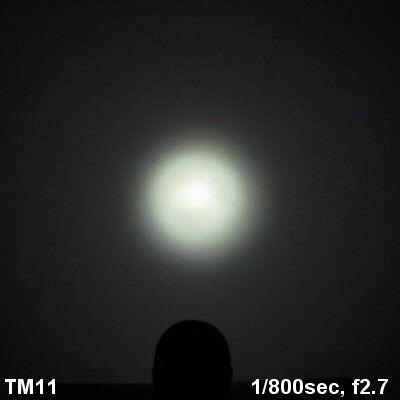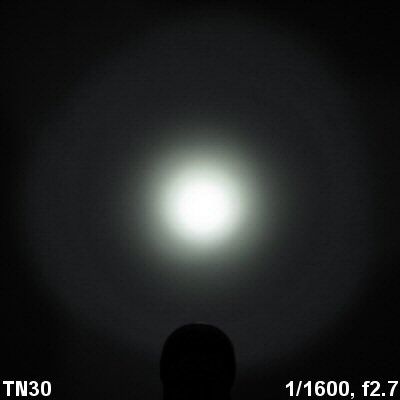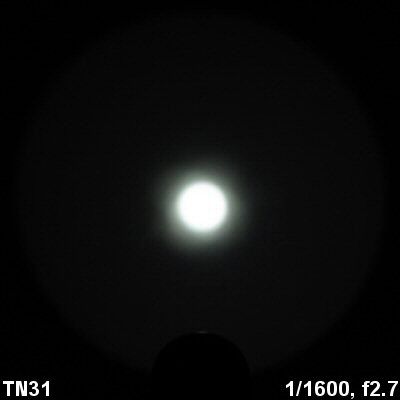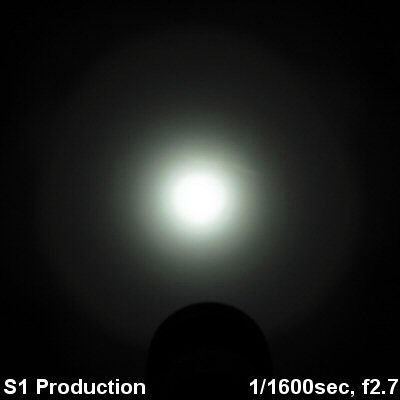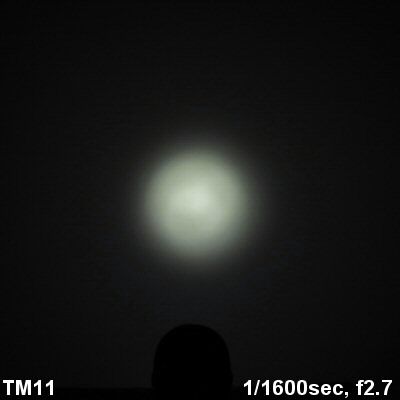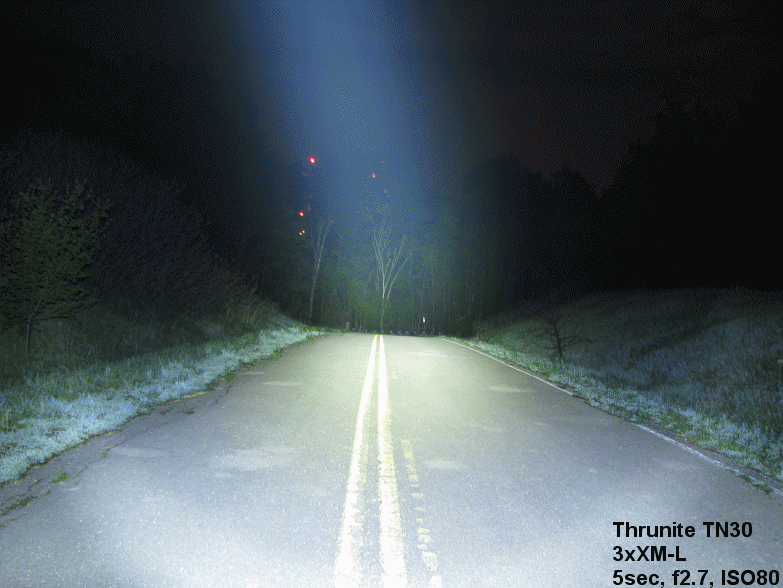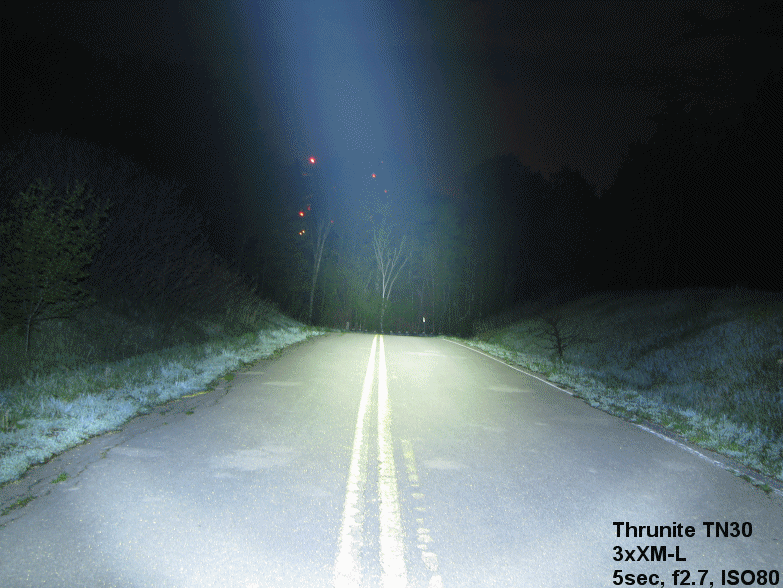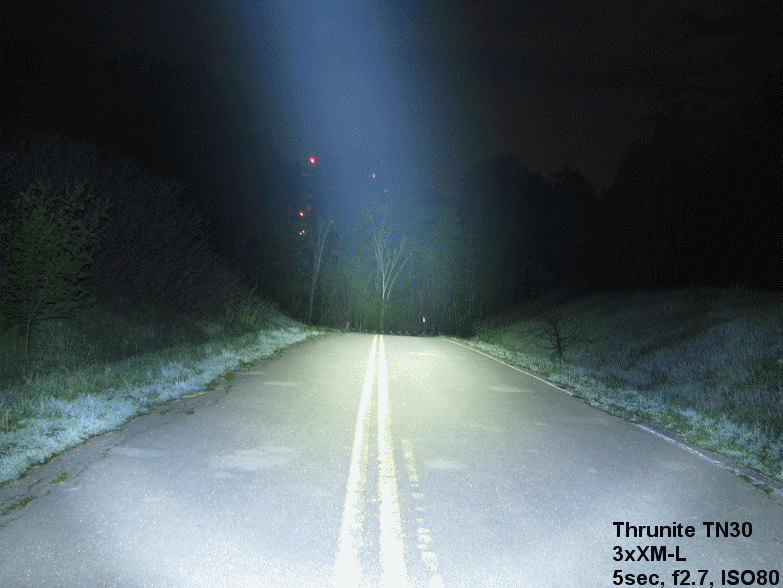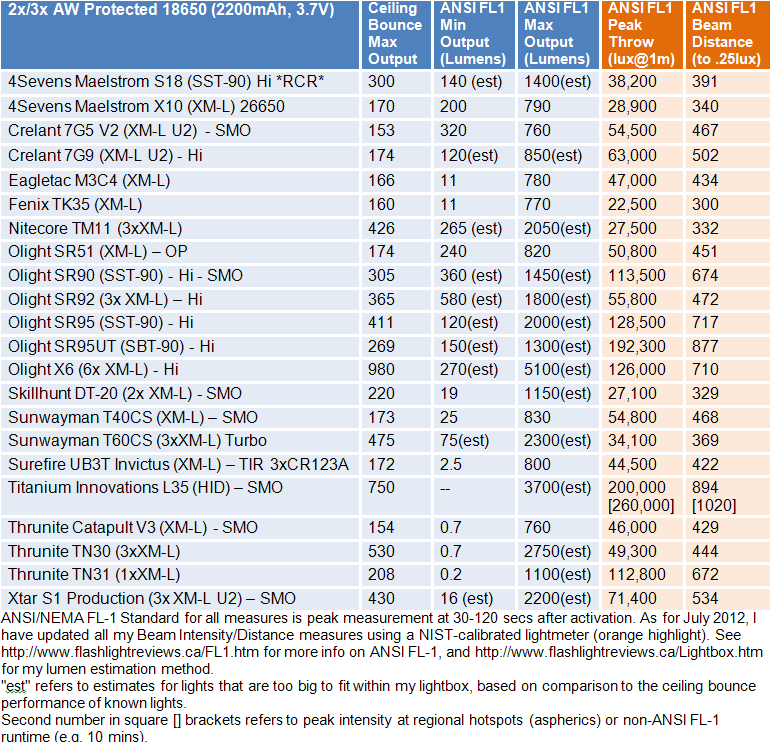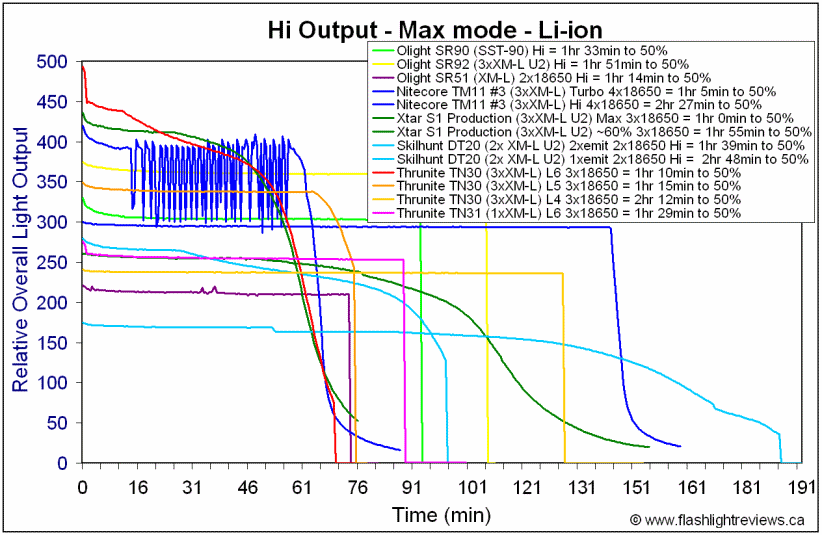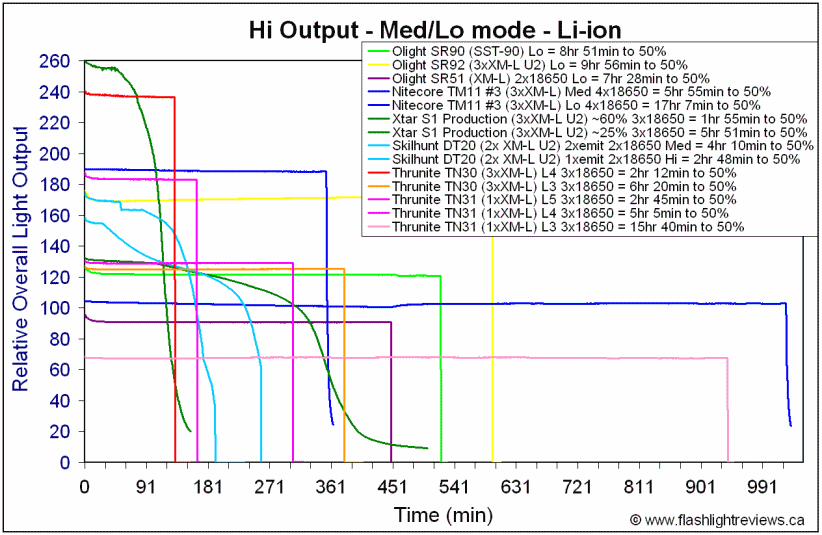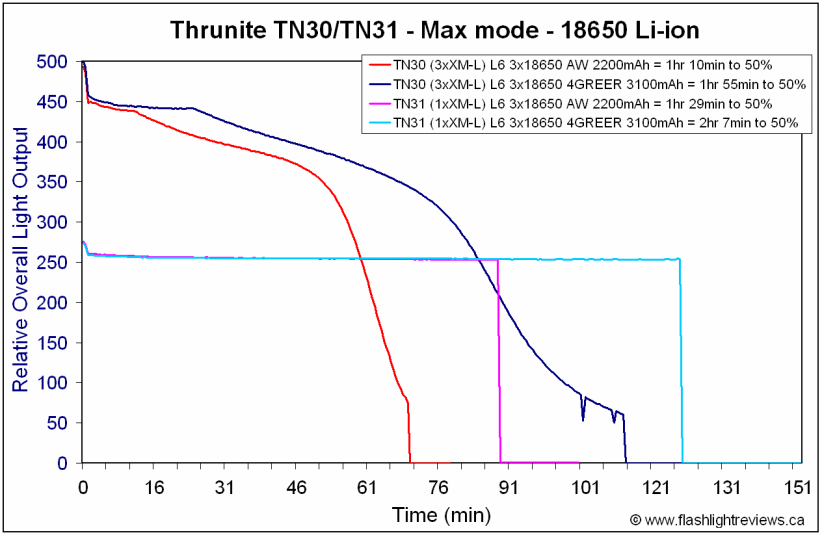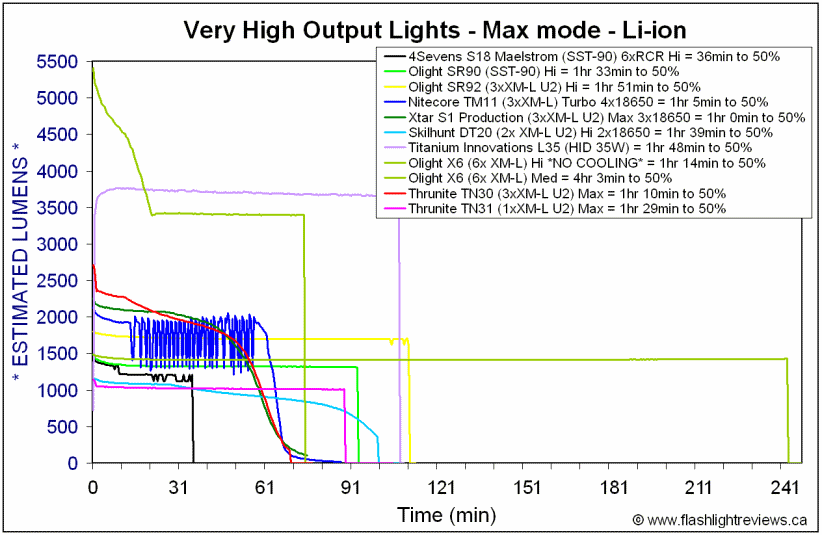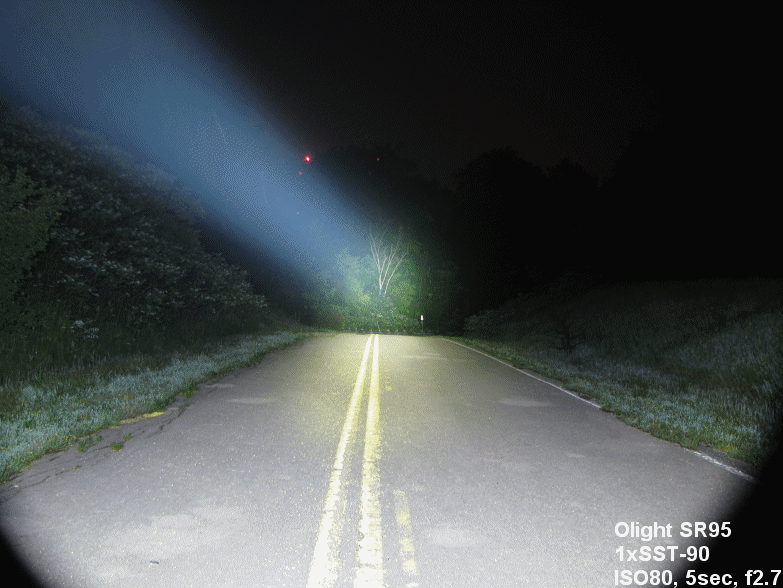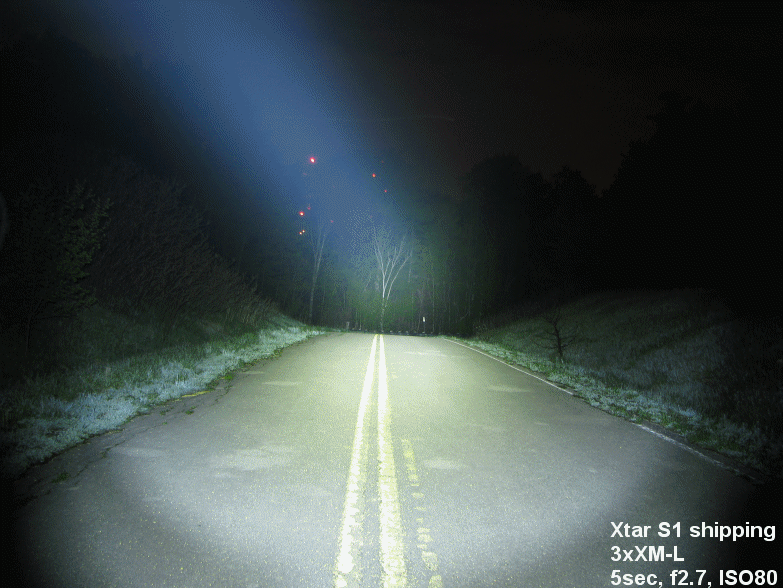Warning: even more pic heavy than usual! :sweat:
The TN30 is a new high-output, 3xXM-L, 3x18650 flashlight from Thrunite. Let's see how it compares to other recent lights in this class, including the new
TN31 (a high-output singe-emitter "thrower" light based on the same battery handle).
 Manufacturer's Specifications for the TN30:
Manufacturer's Specifications for the TN30:
- LED: Three Cree XM-L U2 LEDs
- Max 3000 lumen output using 3 * 18650 batteries: Level 1: 1 lm. 1200 hours; Level 2: 38 lm. 75 hours; Level 3: 352 lm. 10 hours; Level 4: 932 lm. 3.5 hours; Level 5: 1580 lm. 2.5 hours; Level 6: 2780 lm. 1.2 hours; Standby: 67 uA; Strobe: 2780 lm. 2hours.
- Working voltage: 8V to 13V.
- Max runtime: 1200 hours.
- Max beam distance: 370 meters.
- Peak beam intensity: 35000cd.
- Impact resistant: 1.2 meters.
- Waterproof to IPX-8 standard, 2M.
- 178.00mm length, 64.50mm bezel diameter.
- Weight: 559.80g without battery.
- Aircraft grade aluminum body structure.
- Premium type III hard anodized anti-abrasive finish.
- Ultra-clear tempered glass lens with anti-reflective coating.
- Momentary forward click tactical switch.
- Strobe mode for tactical and emergency use.
- Smooth reflector for max light output.
- Highly focused beam for maximum distance.
- Tactical knurling for firm grip.
- Streamlined body design.
- Mechanical reversed polarity protection design for battery carrier.
- Intelligent highly efficient circuit board design for max performance and long run time.
- Specially designed for Military, Law Enforcement, Self-defense, Hunting, Search & Rescue and Outdoor activities.
- Intelligent temperature controlled light output for user safety.
- MSRP: ~$240
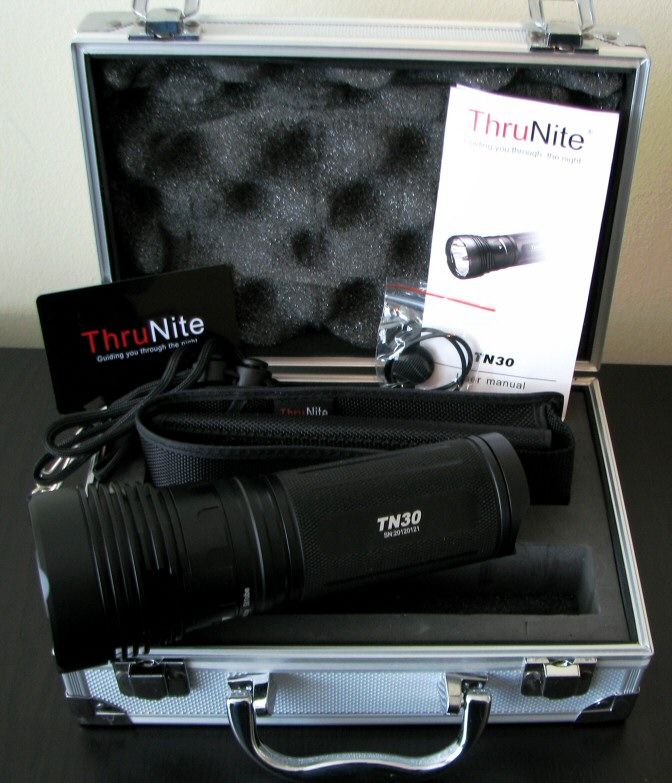
The production version sent to me came in the full presentation case, with metal hinges and closing flaps. Inside were the light, belt pouch, wrist lanyard, manual, warranty card, and extra o-rings and spare boot cover.
Note the cut-out foam had a faint acrid smell when the case was first opened, likely due to some sort of outgassing that had built-up inside the sealed case. Leaving it open for a few days allowed it to fully clear up.
From left to right: AW Protected 18650; Thrunite TN30, TN31, Catapult V3; Xtar S1; 4Sevens S18 Maelstrom; Nitecore TM11.
All basic dimensions are given with no batteries installed:
Thrunite TN30: Weight: 468.2g (est 620g with 3x18650), Length: 179mm, Width (bezel): 64.3mm, Width (tailcap): 49.0mm
Thrunite TN31: Weight: 572.1g (est 723g with 3x18650), Length: 203mm, Width (bezel): 79.0mm, Width (tailcap): 49.0mm
Xtar S1 Production: Weight: 876.0g (est. 1028g with 3x18650 protected), Length: 240mm, Width (bezel): 83.4mm
Nitecore TM11: Weight: 342.6g (476g with 8xCR123A), Length 135.3mm, Width (bezel): 59.5mm
4Sevens S18: Weight: 700g (800g with 6xCR123A), Length: 233mm, Width (bezel) 63.0mm, (tailcap) 25.6mm
Olight SR51: Weight: 405g, Length: 190mm, Width (bezel) 62.0mm
Olight SR90: Weight: 1.6 kg (with battery pack), Length: 335mm, Width (bezel): 97mm
Olight SR92: Weight: 1.15 kg (with battery pack), Length: 271mm, Width (bezel): 98mm
The TN30 is a substantial light, but it is not as large as some other lights of this class. Probably its closest size comparable is the SR51, which is only a 1xXM-L light.
Let's start with the case:
And now the light itself:
Anodizing is a glossy black, and seems to be good quality – no chips or damage on my sample. Labels were sharp and bright white against the black background. Knurling is fairly aggressive on the handle, helping with grip. Scroll down for a discussion of the control ring feel and use.
Screw threads are anodized for head lock-out. Threads are standard triangular cut, but seem of good quality.
Light has a scalloped black aluminum bezel. For more details on the reflector, scroll down to the beamshot section of the review.
Here are some close-up shots of the control ring:
There are slight indents on the control ring to help with feel. There is a label mark on the control ring that lines up with the labels on the head. The six constant output modes are not individually labeled, but there is a graded output bar pictogram over the first four levels (i.e., shows the direction to turn to raise or lower the output). There are firm detents at each level, with a slight click as you enter into each one. :thumbsup:
There is a metal battery carrier that holds 3x 18650 cells. The positive contact plate is slightly raised, so all types of 18650 cells should work fine (i.e., true flat-tops, wide and small button-tops). Longer cells may be a bit tight, but my protected 3100mAh cells all fit. The carrier can be inserted either orientation into the handle. Note that particularly wide cells may be a tight fit into the handle.
The light can tailstand stably, and the tailcap cut-outs facilitate access to the switch. Switch is a forward clicky switch (i.e., press for momentary, click for locked-on). Switch feel is fairly typical, with a definite click. But there's more to it than meets the eye ...

There is a double set of springs in the base, in addition to the spring in the head. The double-set of springs in the tail is a tip-off that something interesting is going on with the tail-switch and the battery carrier. Here is what the tail switch looks like in detail:
There is clearly a circuit along with the forward clicky switch. This is presumably to provide some sort of assist to the switch, modifying the load on it. The dual springs is how it draws power from the battery carrier, irrespective of the head. Scroll down to my Standby Drain section for more info.
User Interface
Turn the light off/on by the tailcap clicky – press for momentary, press and release (i.e., click) for constant on.
Change output modes by turning the control ring in the head. Arranged from left-to-right (looking down at the light, held in traditional flashlight carry), the modes are level 1 (moonlight) > level 2 > level 3 > level 4 > level 5 > level 6 (max) > standby > tactical strobe.
No light is produced on standby, but a miniscule current will be drawn to allow the circuit to respond to a ring turn (see below). As always, I recommend you store the light clicked-off at the tailcap, or locked-out by a head twist.
For information on the light, including the build and user interface, please see my new video overview:
As always, videos were recorded in 720p, but YouTube typically defaults to 360p. Once the video is running, you can click on the configuration settings icon and select the higher 480p to 720p options. You can also run full-screen.
 PWM/Strobe
PWM/Strobe
There is no sign of PWM on any level – I believe the light is current-controlled.

Strobe is an oscillating frequency strobe, switching between 6.9Hz and 14.6Hz on my sample. Each frequency lasts for about 2/3 of a sec. Here is a blow-up of each strobe frequency individually:
There is a bit of a ramp-up to the peak strobe output, but it is not something you could see in practice. Strobe is quite blazingly fast to the eye.
Standby Drain
The "Stand By" mode on the control ring is just that - due to the electronic ring control, the TN30 will always be drawing a small current when the tailcap switch is clicked on.
I measured this current as 114uA. Since the cells are arranged in series, for 2600mAh 18650s that that would translate into a little over 2.6 years before the cells were fully drained. Note this is slightly higher the 67uA standby current listed in the manual, but that may just be natural variation (e.g., my
TN31 was 96uA, in comparison). This is quite reasonable for a standby current.
There is a secondary circuit in the tailcap that has its own standby drain. You don't often see physical clicky switches in these sorts of high-powered lights, likely due to their inability to handle the typical current flows. In this case, the physical forward clicky is connected to its own circuit that presumably provides some sort of assist to the switch, modifying the load on it.
I tried to measure the current draw on the tail switch, but my DMM's uA/mA port seems to have gone on the fritz since my earlier measures of the head standby draw were taken. While I'm waiting for a replacement, HKJ reports between 20-50 uA standby drain on the tail switch (scroll down this thread for commentary).
This means that whenever the battery carrier is loaded with cells and in contact to the tailswitch, a miniscule current will be drawn (i.e., it would take at least 6 years to drain the cells, even at its highest point). But to break this current, you would need to remove the carrier from the handle.
Beamshots:
Each emitter was well-centered in its own reflector well – but the wells overlap with each other considerably. Expect a lot of peripheral artifacts in the spill, due to the overlapping wells.
And now, what you have all been waiting for.

All lights are on their respective max battery sources (3xAW protected 18650 for then TN30/31), about ~0.75 meter from a white wall (with the camera ~1.25 meters back from the wall). Automatic white balance on the camera, to minimize tint differences.
Output is slightly greater initially on the TN30 than most of my other multi-emitter lights. Scroll down for a comparison of estimated lumens.
Also as expected, the overlapping emitter wells produce visible patterns in the spill. This is particularly noticeable at close-range distances.
For outdoor beamshots, these are done in the style of my earlier
100-yard round-up review. Please see that thread for a discussion of the topography (i.e. the road dips in the distance, to better show you the corona in the mid-ground).
The TN30 produces a lot more light than the
TN31 (1xXM-L), with a wider spillbeam. But it lacks the dedicated throw of the more focused TN31.
The TN30 has more output than my other 3xXM-L lights (at least initially). Scroll down to my Summary tables for more details on relative output and throw.
Testing Method:
All my output numbers are relative for my home-made light box setup, a la Quickbeam's flashlightreviews.com method. You can directly compare all my relative output values from different reviews - i.e. an output value of "10" in one graph is the same as "10" in another. All runtimes are done under a cooling fan, except for any extended run Lo/Min modes (i.e. >12 hours) which are done without cooling.
I have devised a method for converting my lightbox relative output values (ROV) to estimated Lumens. See my
How to convert Selfbuilt's Lightbox values to Lumens thread for more info.
Throw/Output Summary Chart:
My summary tables are reported in a manner consistent with the ANSI FL-1 standard for flashlight testing. Please see
http://www.flashlightreviews.ca/FL1.htm for a discussion, and a description of all the terms used in these tables. Effective July 2012, I have updated all my Peak Intensity/Beam Distance measures with a
NIST-certified Extech EA31 lightmeter (orange highlights).
UPDATE AUGUST 20, 2012: I have revised the summary table above to reflect the results of my new NIST-calibrated lightmeter.
Initial max output is measurably higher than other 3xXM-L emitter lights I've tested – possibly due to the fact that the 3x18650 cells are in series instead of parallel. You would have to ask a circuit/battery expert to explain this further – but I suspect it has to do with how many amps can be drawn from the cells in series as opposed to parallel.
Given the estimated output, it seems the TN30 is able to drive the XM-L U2 emitters to their maximum level. Note the output doesn't stay there for long – the light has a step-down after one and half minutes (see my runtimes for more info).
Peak throw is quite reasonable for the depth of the reflector and the degree of overlap of the wells.
Lowest output is lower than 1 lumen in my testing. In fact, here is a breakdown of the estimated lumen values for both the TN30 and TN31 in my testing:
As you can see, the reported output and throw specs from Thrunite seem remarkably consistent with my testing. I suspect Thrunite did indeed get these tested in a properly-calibrated integrating sphere. :thumbsup:
Output/Runtime Comparison:
Output/runtime performance was quite good for the TN30 when taking into account the 3x18650 battery source. It was certainly well in keeping with other current-controlled lights at these levels.
Although initially a bit brighter than the other 3xXM-L lights tested here, you will see that the overall runtime pattern is consistent with other lights once step-down occurs (at 69 secs into the run).
With the exception of the Max output run, the TN30 was quite good at maintaining stably flat regulation across its various modes.

Although it doesn't show in the runtimes above, the TN30 would flash a few warning flashes shortly before hitting the built-in battery protection circuit shut-down.
In terms of reported ANSI FL-1 runtimes, the Thrunite numbers seem pretty good, perhaps just slightly inflated at some levels. Remember that my runtimes are done on 2200mAh cells. On 3100mAh cells, I would expect runtimes fairly close to the reported Thrunite specs.
The above is a comparison of my standard 2200mAh AW cells to the NCR18650A-based 4GREER 3100mAh cells. No real surprises here - the 3100mAh cells perform better.
Oh, and those little blips near the end of the L6 run on the TN30 are from the low-battery warning system of the light.
Finally, for those of you have trouble visualizing the conversion of my relative lightbox values to estimated lumens, here is how the TN30 stacks up to the other very high-output lights (note the * ESTIMATED LUMENS * output scale below).
Potential Issues
Due to the overlapping reflector design, there are very noticeable artifacts in the periphery of the spillbeam (as with other lights that use a similar design).
Due to the electronic control ring in the head, the light has a stand-by current when in "Stand By" mode. But this current is very low (96uA), and will not be problem for regular use (i.e. will take about 3 years to drain three fully charged 18650 2600mAh cells). You can break this current by clicking the tailswitch off, or loosening the head from the body.
However, there is a second standby current due a circuit in the tail to assist the physical switch. The tail circuit draws its power directly from the battery carrier, irrespective to the state of the head (i.e., the purpose of those dual springs in the tail). The current draw is miniscule (i.e., over 6 years to fully drain the cells), but the only way to break it is to remove the battery carrier from the handle.
Only 3x 18650 Li-ion cells may be used in the light (i.e., doesn't support multiple CR123A primary cells)
Light uses a battery carrier, and very long or wide cells may be a bit tight. But all cells I tested worked in the carrier, including protected flat-top cells.
The individual levels are not specifically labeled on the head of the light, so you may need to "count" detents to figure out what level you are set to.
Preliminary Observations
The first 3x XM-L high-output light from Thrunite, the TN30 has a lot going for it. It terms of raw power, it is the brightest light of this class I've tested so far (at least for the first 69 secs – after that, it steps down to a level closer to the competition).

oo:
Output/runtime performance was very good, with the current control circuitry providing excellent runtimes at all levels tested. Stabilization was quite good as well, with perfectly flat regulation on all levels, aside from Max output. Note there is a brief warning flash to indicate when the batteries are nearly exhausted. :thumbsup:
In terms of the interface, the control ring worked well in my testing. I particularly liked the clear and firm detents at every level. The six output levels are well spaced (and very accurate to the specs), giving you plenty of output and runtime options. I am also glad to see strobe was placed after a standby mode (i.e., don't need to keep running into it). A good implementation of a control ring.

I like the use of the physical clicky switch, but its implementation is a little unusual here - there is actually a second circuit in the tailcap that seems to provide some sort of powered assist to it. The standby current draw is tiny though.
The beam is reasonable for the type and class of light, with plenty of throw and spill. Personally, I am not a fan of the wide overlapping reflector well design, as this produces a lot artifacts, but these are really only noticeable at a close range (i.e., in the near spill). :shrug:
The TN30 in an impressive offering. The light performed well in my testing, with little to criticize. I am particularly impressed to see the very accurate output, throw and runtime specs from Thrunite (you would think that ANSI FL-1 would have resulted in more reliable specs overall, but that doesn't generally seem to be the case for many other makers

). Certainly a strong contender in the high-output arena. :wave:
----
TN30 provided by Thrunite for review.


